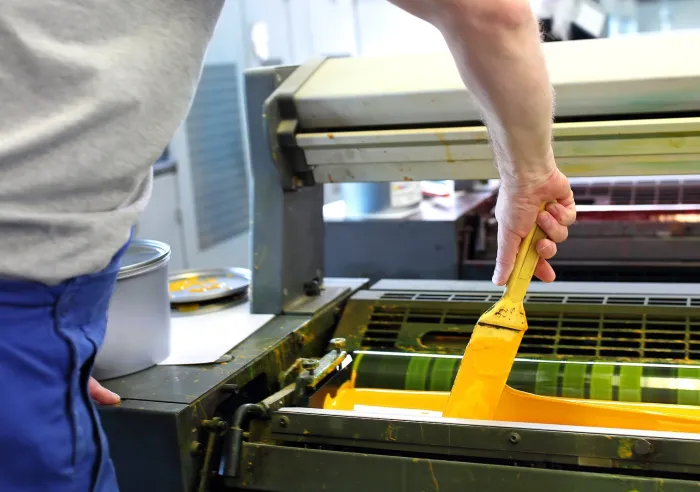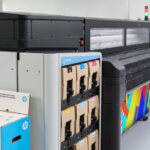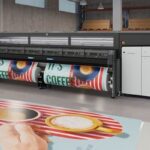The printing industry is undergoing a significant transformation with the introduction of biodegradable plates in offset printing. This innovative approach is not just a trend; it’s a necessity as we move towards more sustainable practices. Using biodegradable plates can significantly reduce the environmental impact of printing operations.
With the increasing awareness about environmental sustainability, biodegradable plates in offset offer a promising solution for eco-conscious businesses. These plates decompose naturally, reducing waste and promoting a greener planet. As marketing professionals, adopting such practices can enhance brand reputation and align with consumer expectations for sustainability.

What Are Biodegradable Plates?
Biodegradable plates are made from materials that naturally break down into non-toxic components. Unlike traditional plates used in offset printing, which may contain harmful chemicals and contribute to landfill waste, biodegradable options are crafted from renewable resources.
Materials Used in Biodegradable Plates
Common materials include bioplastics, derived from natural sources like corn starch, and other plant-based materials. These materials are designed to decompose swiftly without leaving harmful residues. This makes them an excellent choice for businesses looking to minimize their carbon footprint.
Benefits of Using Biodegradable Plates in Offset Printing
The shift towards using biodegradable plates in offset printing brings numerous advantages. Firstly, it reduces the environmental impact significantly, aligning with global sustainability goals. Secondly, it offers potential cost savings in waste management and disposal. Lastly, it enhances brand image by showcasing a commitment to eco-friendly practices.
Environmental Impact
By using biodegradable materials, we reduce the reliance on petroleum-based products, which are notorious for environmental damage. This shift supports the reduction of greenhouse gas emissions, contributing to a healthier planet.
Cost-Effectiveness
While the initial investment might be higher, the long-term savings in waste management and potential tax incentives for sustainable practices can offset these costs. Businesses can also leverage the positive image associated with sustainability to attract eco-conscious customers.
Challenges and Considerations
Despite the benefits, transitioning to biodegradable plates in offset printing is not without its challenges. The technology is still evolving, and there may be limitations in terms of availability and cost. Additionally, businesses must ensure that the entire printing process, including inks and other materials, is aligned with sustainable practices.
Technological Limitations
The development of biodegradable printing plates is ongoing. While progress is being made, it is crucial for businesses to stay informed about advancements and be prepared for potential challenges during the transition.
Supply Chain Considerations
Businesses must evaluate their supply chains to ensure that the materials used are certified biodegradable. This may involve reassessing suppliers and potentially facing higher costs for eco-friendly materials.
Implementing Biodegradable Plates in Your Business
For marketing professionals, integrating biodegradable plates can be a strategic move. Start by conducting a sustainability audit of your current practices. Identify areas where biodegradable options can be implemented and set clear goals for reducing environmental impact.
Partnering with Eco-Friendly Suppliers
Choose suppliers who are committed to sustainability. This partnership can help ensure a consistent supply of biodegradable materials and align your business with eco-friendly practices.
Educating Your Team
Train your team on the importance and benefits of using biodegradable plates. Ensure they understand the technical aspects and can effectively communicate these benefits to clients.
Marketing Your Eco-Friendly Practices
Highlight your commitment to sustainability in your marketing efforts. Use it as a key differentiator to attract environmentally-conscious consumers and enhance your brand image.
Conclusion: The Future of Biodegradable Plates in Offset
The adoption of biodegradable plates in offset printing is more than just an environmental initiative; it’s a business strategy that aligns with the growing consumer demand for sustainable practices. By embracing this change, businesses not only contribute to a healthier planet but also position themselves as leaders in sustainability.
For more insights on offset printing, visit [Ordant’s website](https://ordant.com/what-is-offset-printing/).

FAQs
Are biodegradable plates more expensive than traditional plates?
Initially, they might be more costly; however, the long-term savings in waste management and environmental benefits can outweigh the initial investment.
Do biodegradable plates affect print quality?
No, biodegradable plates are designed to perform as well as traditional plates, ensuring high-quality print outputs.
How can I ensure my printing process is fully sustainable?
Evaluate your entire printing process, including inks and other materials, and ensure they meet sustainability standards. Partnering with eco-conscious suppliers can also help.
This article contains affiliate links. We may earn a commission at no extra cost to you.






